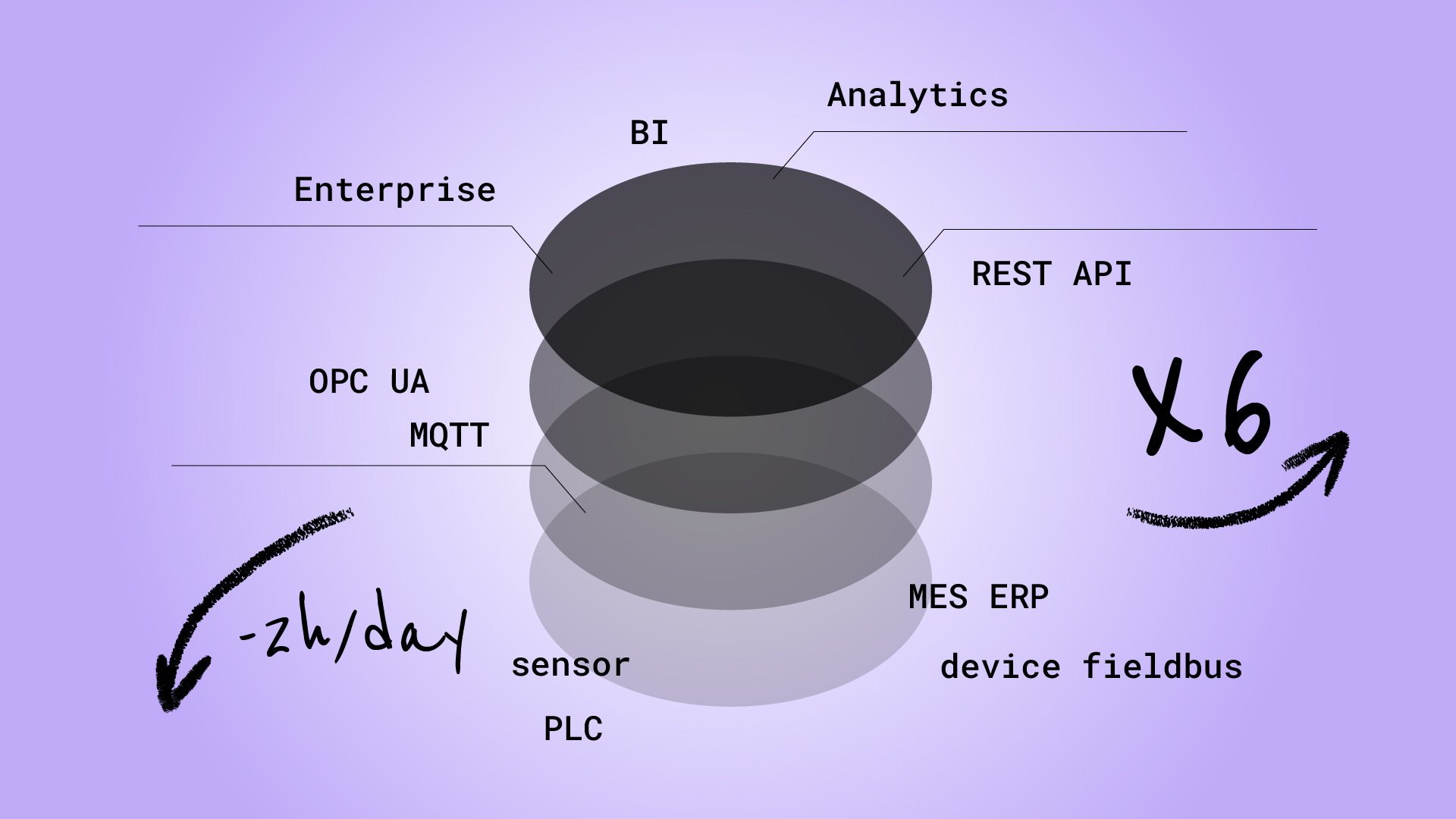
The connectivity challenge: legacy systems
 For many companies, legacy systems represent a bottleneck to initiatives to digitize business processes and interconnect machines 4.0. Is it possible to overcome this obstacle and thus embark on the Industry 4.0 journey?
For many companies, legacy systems represent a bottleneck to initiatives to digitize business processes and interconnect machines 4.0. Is it possible to overcome this obstacle and thus embark on the Industry 4.0 journey?
The purpose of Industry 4.0 is to enable machinery to interconnect 4.0.
Turning a machine into a 4.0 machine means transforming the amount of raw data produced by it into information that can be easily accessed and analyzed by the management systems in the company.
However, related to what was written just above, there is an obstacle to overcome.
The challenge of connectivity, which is mainly related to legacy systems.
What do we mean by legacy systems?
In industry, the term legacy systems refers to assets, which can be represented by machinery, devices, architectures, that are obsolete and therefore do not meet the needs and paradigms of the market and the time range in which they operate.
To date, most industries have a wide variety of legacy systems, fully functional with still several years of service ahead. For example, a CNC machine can operate for more than 40 years.
For many companies, these systems are seen as a drag on the business initiatives and processes in which they are involved. Many industrial entities struggle to convert their assets to 4.0, especially smaller companies.
Usually because, this kind of transformation, requires a substantial commitment in terms of time, money and resources: let's not forget the high failure rate of digitization projects: a pitiless, worrying, very significant result.
On the other hand, not investing, from this point of view, can lead to a gradual descent in terms of competitiveness and business goals.
It becomes essential to extend their value to the need of business processes and market needs through supporting technologies (software and systems).
What are the main limits for interconnection 4.0 of legacy systems?
Legacy systems, designed in a past market context, were not born to be connected and therefore have limitations:
- Heterogeneity: different types of machines and brands, all with different protocols;
- Inflexibility: they are unable to grow and develop at the same pace as a business or industry to meet new business requirements;
- Safety and security: are designed exclusively for security. Therefore, they do not have cybersecurity controls, proper authentication, access control, or activity limits;
- Compatibility: they are not compatible with most modern operating systems, devices and applications.
The protocols are old, and the systems were built for one purpose only, not to provide the extensive data needed in modern IoT projects.
Industrial IoT solutions for interconnecting legacy systems
It is often thought that the only way to embark on an Industry 4.0 journey is to replace, then invest in the purchase of new equipment.
However, while not keeping up with current market needs, these systems are still a key investment and asset for companies, so they need to be kept up and running.
Considering this, many industrial entities are looking to adopt solutions with a view to scalable architecture, which is more expandable through the integration of applications and services that can increase the competitiveness of supply and performance over the long term, while maintaining the current fleet.
It is to meet this kind of need that Industrial IoT solutions, such as Alleantia, were born, which thanks to its library of ready-to-use industrial drivers is able to talk to any type of industrial machinery and translate its language into valuable information that can be integrated into your production processes.
Alleantia is, in fact, specially developed to overcome and solve the problem of connectivity of obsolete and heterogeneous machines, in a very flexible and secure way.
It allows you to collect, aggregate and provide secure access to all information regarding industrial activities, eliminating the need to purchase, use multiple connectivity solutions.
This type of solution will enable applications such as MES and ERP to send commands to machines and devices while complying with Industry 4.0 requirements.
You will, in addition, be able to remotely access machines in complete safety and cyber security, to perform, for example, maintenance operations.
You will have a reliable and scalable IoT infrastructure thanks to the flexibility of the Alleantia suite components (drivers, IIoT Apps..), and it will become easy to acquire data from all types of industrial machines/devices, normalize them and make them available to applications, clouds and databases with IT-standard protocol.
Start interconnecting your legacy machinery now by downloading the free version of Alleantia ISC Software!



